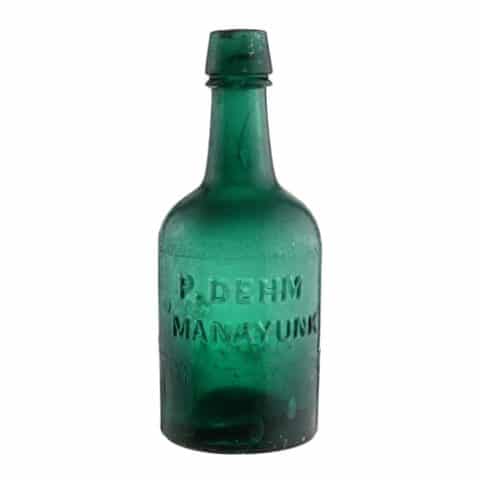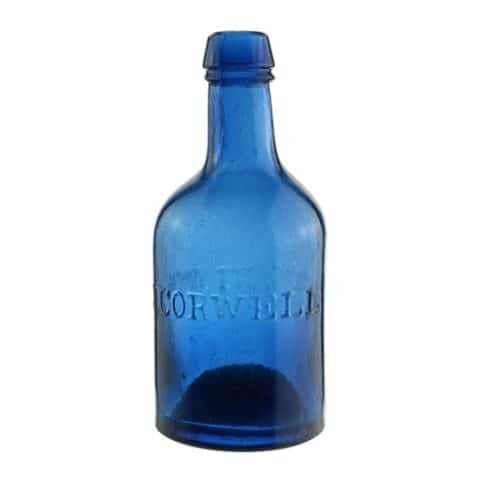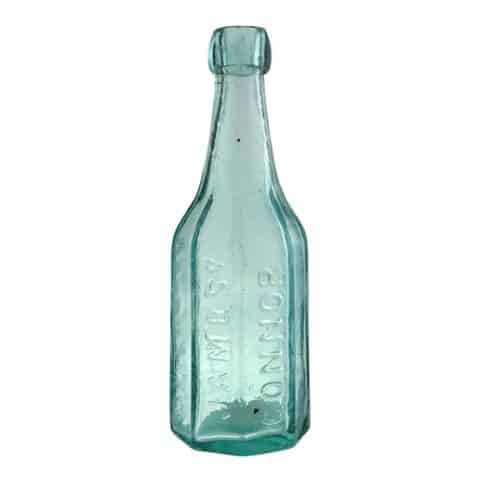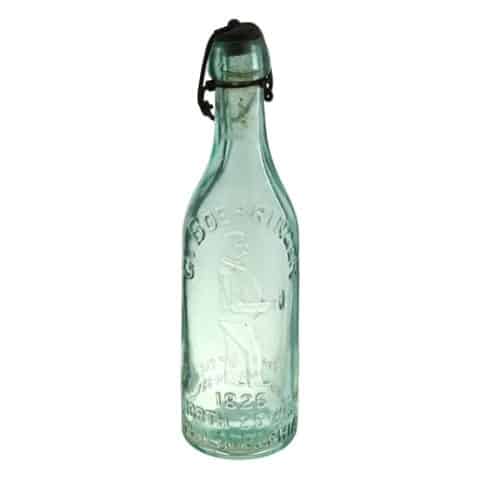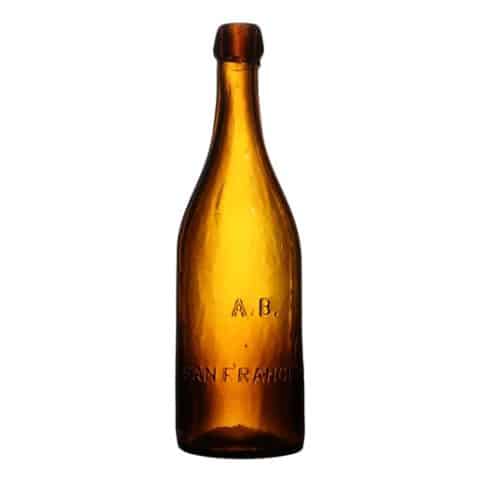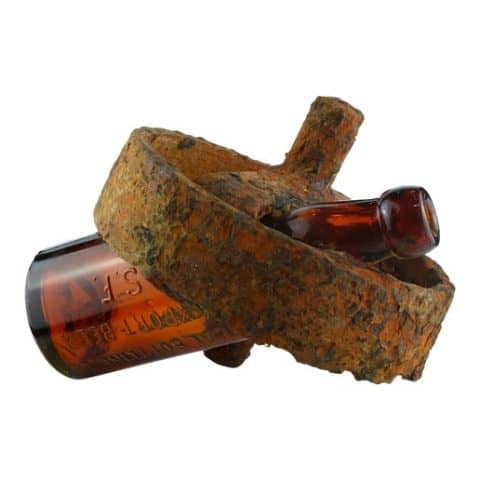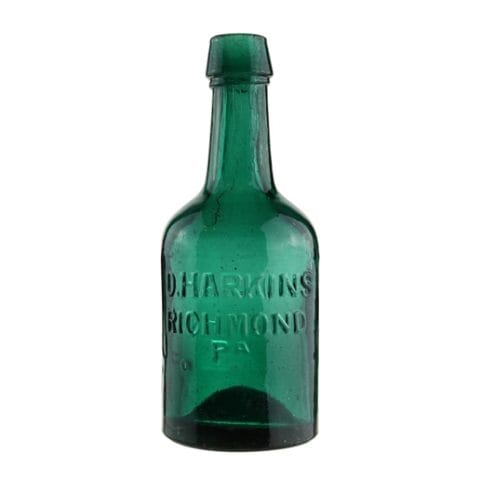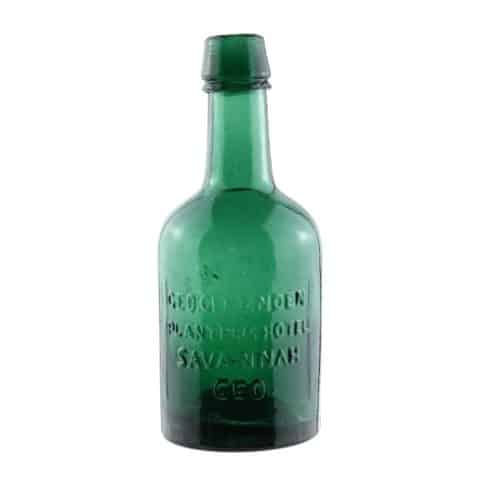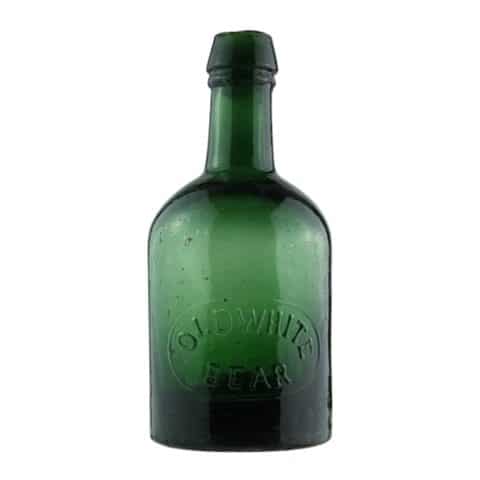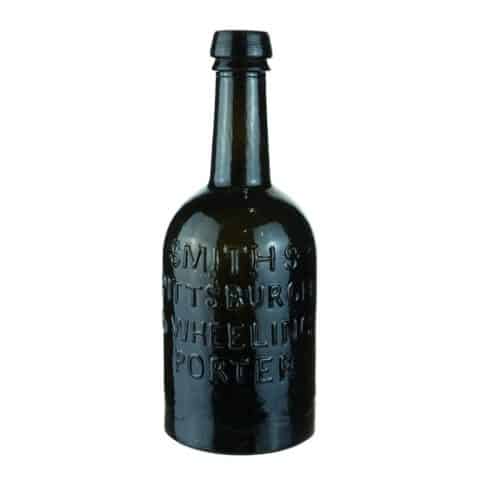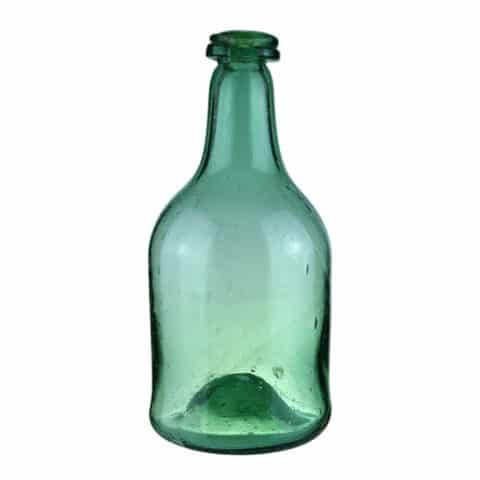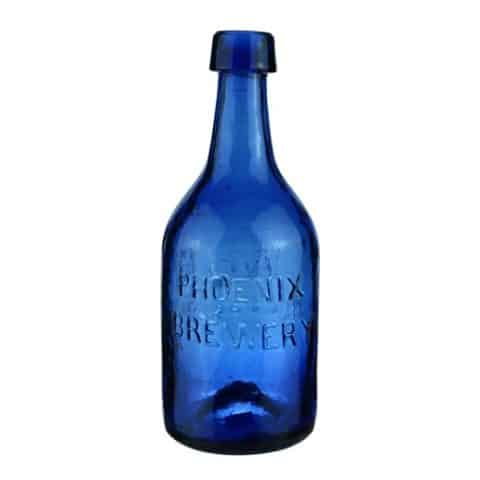Pittsburgh Brewery Lager Beer
Pittsburgh Brewery Lager Beer
Pittsburgh Brewery, St. Louis, Missouri
Dark Amber Porter Style Bottle
Provenance: Chip Cable Collection
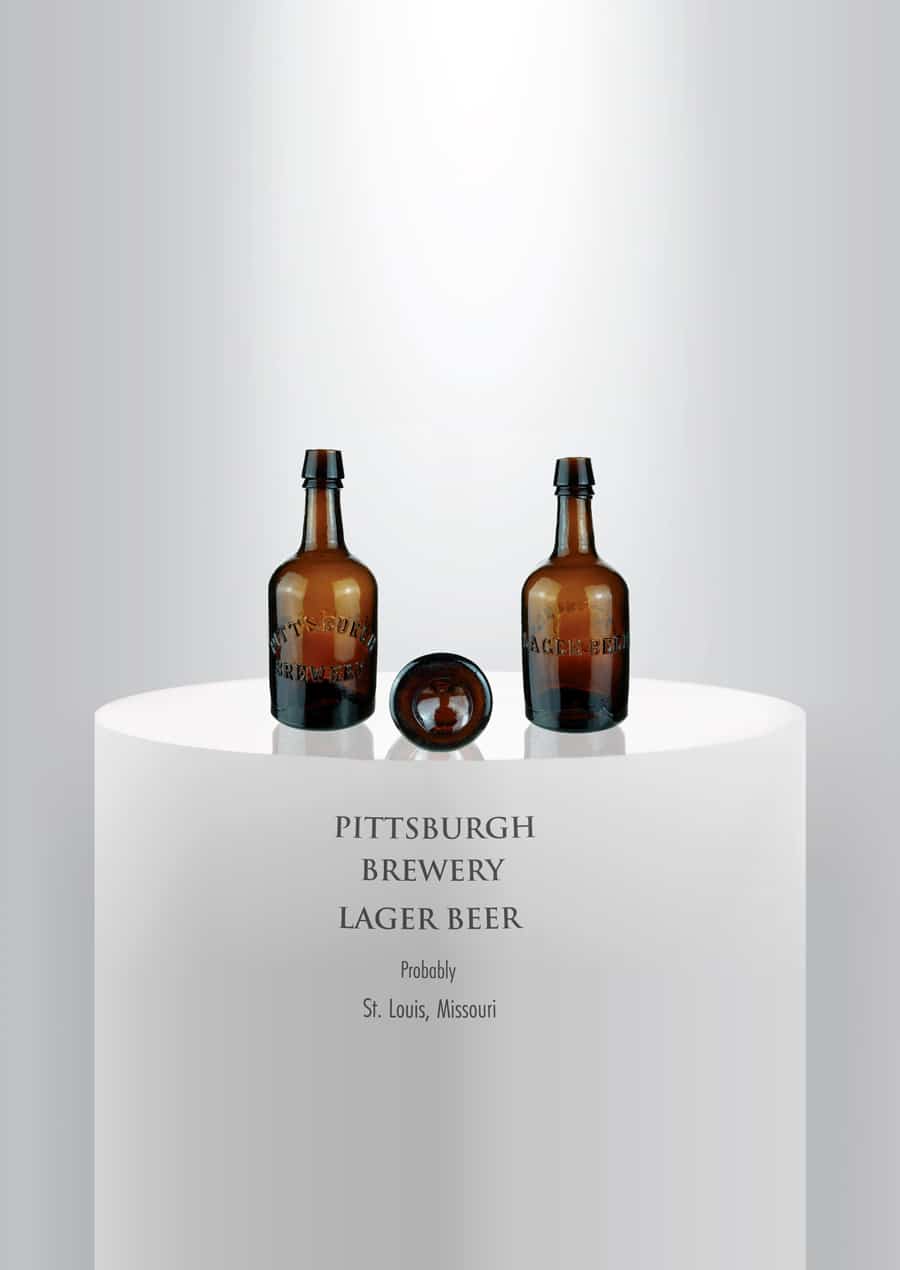
The museum has yet to fully determine the specifics of our extremely rare embossed “Pittsburgh Brewery Lager Beer” bottle as we are unsure of the brewery’s location, proprietor and glass maker. Most evidence points to St. Louis, Missouri.
The bottle consignor adds, “I always thought it was a branch of the Pittsburgh Brewery in Pittsburgh but haven’t found a connection. I bought it from a collector in St Louis. It’s the only one known in mint condition. I always thought it was Pittsburgh, Pennsylvania, because of the spelling of “Pittsburgh” with an “h” at the end.”
Lager is a beer that has been brewed and conditioned at low temperatures and is German for “storage,” as the beer was stored before drinking in the cool caves in St. Louis, where it was fermented. Most lagers are distinguished by the use of Saccharomyces pastorianus, a “bottom-fermenting” yeast that ferments at relatively cold temperatures. Lagers can be pale, amber, or dark. Pale lager is the most widely consumed and commercially available style of beer.
On the website Soda and Beer Bottles of North America, Tod von Mechow lists the bottle as Pittsburgh Brewery, St. Louis, Missouri (1857-1876) in aquamarine and amber. Within the book Missouri Bottles by the late Johnnie Fletcher (FOHBC 2009 Hall of Fame), the bottle is also listed as St. Louis. In addition, diggers and collectors in the St. Louis region firmly attribute the bottle to St. Louis as many bottle shards have been found there.
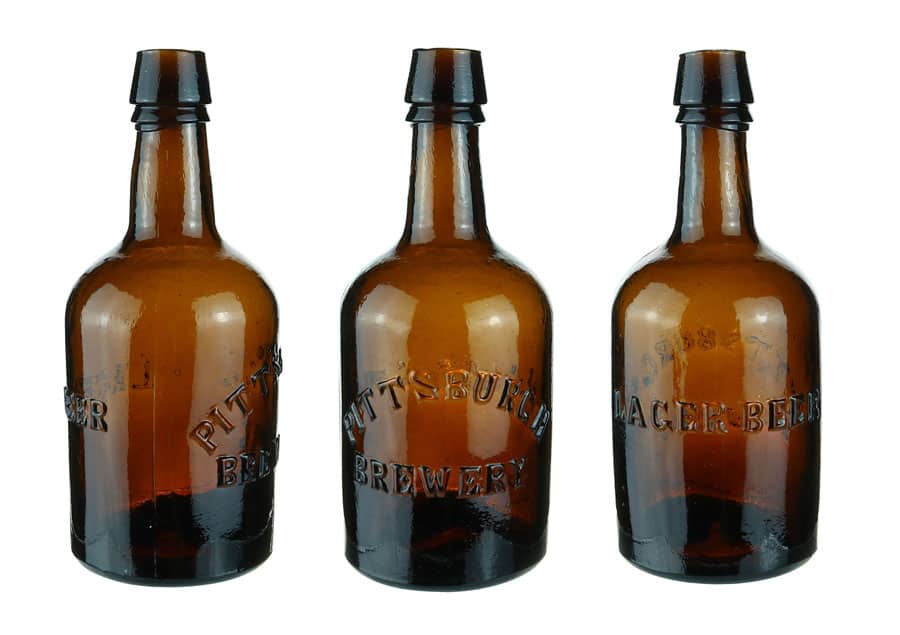
Our museum example of a porter-style bottle is embossed in two lines, ‘PITTSBURGH BREWERY’ on the face of the bottle in a serif typestyle. “Pittsburgh” is arched and centered over straight-line “Brewery.” The reverse side of the bottle is embossed ‘LAGER BEER’ in a single horizontal line. The bottle is dark amber, has a smooth base and a double-applied tapered collar mouth.
St. Louis, Missouri
Many immigrants from Germany and Bohemia found their way to Cincinnati and St. Louis, among other cities, starting sometime around 1830. The immigrants’ principal skills included making bricks and beer, so many breweries began to open in the city made of red brick. Most of the German-Americans settled in Soulard, the city’s oldest neighborhood. Over the years, this area was home to many breweries, eventually becoming the home of the world’s largest brewer, Anheuser-Busch. John Adam Lemp arrived in St. Louis from Eschwege, Germany, in 1838 and sought his fortune as a grocer. What set him apart from other grocers was his ability to supply an item that wasn’t sold by any of his competitors—Lager beer.
An 1857 St. Louis newspaper article lists seven active city breweries, including Iron Mountain Brewery, Excelsior Brewery, New Bremen Brewery, Eagle Brewery, Lafayette Brewery, Franklin Brewery, and Pittsburgh Brewery.
The Pittsburgh Brewery in St. Louis was located at 439 and 441 Carondelet Avenue between Sidney and Victor and was run by Coste, Kraeling & Co. (Felix Coste and C. Kraeling) from 1856 to 1859. A May 28, 1857 newspaper ad in the Daily Missouri Republican stated, “BOTTLED LAGER BEER—Having removed our Depot to the large and conveniently located basement, southwest corner of Market and Second streets, entrance on Second, we are now prepared to fill all orders from the city and country at short notice and at moderate prices. Our LAGER is of a very superior quality, being from the well known Pittsburgh Brewery of Messrs Coste, Kraling (sic) & Co., and will be delivered to city customers free of cost, in quarts and pints as desired. Orders respectfully solicited. Orders sent through the Post Office promptly attended to. LEUSSLER & RUCH.” In 1859, the Daily Missouri Republican said that the “Pittsburgh Brewery—Coste, Kraehling (sic) & Co., started in 1856 and produced 3,500 bbls. lager; 3,000 bbls. common” that year.
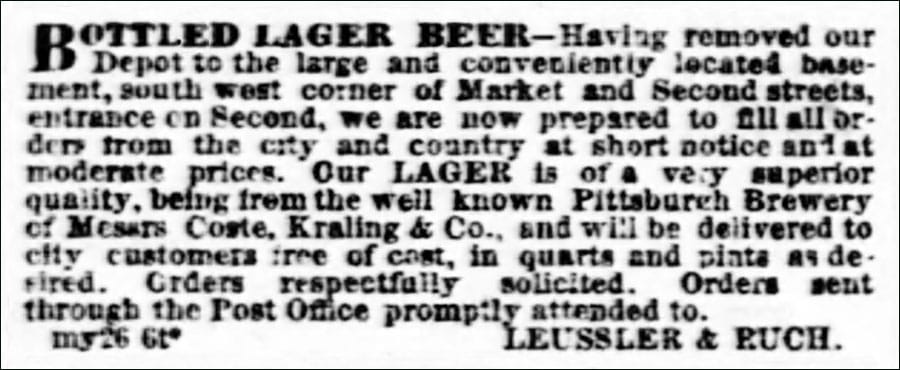
The brewery ownership changed to Coste and Leussler in 1859 and lasted ten years at the same address. A. Leussler & Co. ran the brewery from 1869 to 1876, now at 2506 Carondelet Avenue. This would be the last year of Pittsburgh Brewery in St. Louis.

Pittsburgh, Pennsylvania
The first record of a commercial brewery in Pittsburgh was with Edward Frauenheim, a German immigrant and part owner of Frauenheim, Miller Company, who started the Iron City Brewery in 1861, the first American brewery to produce a Lager.
On February 3, 1899, the Pittsburgh Dispatch reported that 12 local brewing firms applied to transfer their license to the trust known as Pittsburgh Brewing Company. These breweries were the Wainwright Brewing Company, Phoenix Brewing Company, Keystone Brewing Company, Winter Brothers Brewing Company, Phillip Lauer, John H. Nusser, Eberhardt Ober Brewing Company, Hippely Sons, Ober Brewing Company, J. Seiferth Brothers, Straub Brewing Company and the Iron City Brewing Company. These city breweries were joined by nine breweries outside the county who also took part in the merger. With this amalgamation, Pittsburgh Brewing Company became the largest brewing operation in Pennsylvania and the third largest in the country. While important, these dates are far too late for our subject bottle.
Along the way, other short-lived breweries could have used the Pittsburgh Brewery name, maybe even George W. Smith, the well-known Pittsburgh and Wheeling, West Virginia, brewer. His Smith’s Pittsburgh & Wheeling Porter bottle example is very similar to our subject bottle. Rhodes & Verner (Pittsburgh) were also associated with a “Pittsburgh Brewery” in 1861, selling their famous Ale in St. Louis.
Primary Image: Dark amber “Pittsburgh Brewery Lager Beer” bottle imaged on location by Alan DeMaison, FOHBC Virtual Museum Midwest Studio.
Support: Reference to Soda & Beer Bottles of North America, Tod von Mechow
Support: Reference to Old Breweries, Pittsburgh Brewery
Support Image: 1870s ad for the Bavarian Brewery, E. Anheuser & Co. – Courtesy Anheuser-Busch archives.
Join the FOHBC: The Virtual Museum is a project of the Federation of Historical Bottle Collectors (FOHBC). To become a member.


